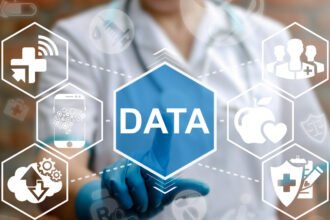While healthcare has evolved in many keyways over the last several decades, there are still several groups of individuals who find themselves without access to appropriate healthcare resources. One of these groups is rural residents, who face a number of challenges when it comes to having access to healthcare.
Fortunately, data-driven approaches are emerging as potent solutions to this obstacle. Understanding the ways that data can be leveraged to help solve the issue of rural healthcare can give one insight into the ways healthcare is evolving in today’s modern world.
Here is the importance of data-driven approaches to improving healthcare in rural areas.
Using Data to Improve Telemedicine
Telemedicine is a practice that has been helping address the problem of healthcare access in rural areas in powerful ways. In essence, it can be described as the practice of providing healthcare services through the use of electronic technology, such as smartphones and computers. Given the fact that telemedicine has presented itself as a promising practice in rural areas, improving and advancing telemedicine is steadily becoming a priority in healthcare.
Data-driven decision-making has the power to improve telemedicine and make it more effective. Essentially, healthcare providers can use data to analyze past telemedicine practices. The insights provided by these analyses can offer insights that indicate which telemedicine treatments are most effective and which are not. With these insights, healthcare organizations can start improving telemedicine treatments that are underperforming and investing more in the ones that work well.
Using Data to Highlight Groups in Need
Though rural areas are often generalized and grouped together given their similar lack of access to healthcare resources, the truth is that each rural area has its own specific needs. Some have a greater need for healthcare resources in general while some contain specific groups of residents who are acutely underserved. Using data can help healthcare organizations pinpoint which rural communities and groups are most in need of healthcare resources and treatment.
In addition to already experiencing a marked lack of access to healthcare resources, hospital closures in rural areas became extremely common as a result of the COVID-19 pandemic. This exacerbated the need for additional healthcare resources in a plethora of rural areas.
By analyzing data on various rural populations, those with the biggest lack of access to healthcare can be made a priority. This being the case, a data-driven approach can improve healthcare in rural areas by highlighting which specific areas and groups need the most immediate focus and resources.
Using Data to Improve Health Outcomes
In rural communities, there are typically a number of ailments that are more common. Oftentimes, these arise from a lack of health literacy which causes rural residents to engage in a number of unhealthy behaviors such as excessive smoking and drinking. However, healthcare organizations have an opportunity to improve the health outcomes of rural residents by looking at data to illuminate patterns of the most common illnesses and engaging in preventative treatments.
As a result of analyzing data, healthcare organizations can identify early symptoms of common illnesses and engage in effective preventative care. This means that data can help healthcare organizations improve the health outcomes of rural residents in a significant way.
As such, taking advantage of a data-driven approach to rural healthcare can have a profound impact on the health outcomes of masses of rural residents.
Using Data to Monitor Rural Health
In many rural areas, the closest medical facility can take hours to reach. As such, many rural residents refrain from receiving consistent check-ups and medical assessments. This can result in preventable health ailments becoming more severe and sometimes even terminal. To solve this issue, many healthcare organizations are turning to health monitoring devices that rural residents can wear. In essence, these devices analyze health data and detect patterns. When these devices detect health data that seem anomalous or abnormal, medical professionals can be alerted.
Using data to monitor the health of rural residents remotely is a way that healthcare organizations can help these individuals prevent serious illnesses without having to pour large sums of money into building new medical facilities. This being the case, using the data analysis capabilities of remote monitoring devices is a powerful data-driven solution to the problem of rural healthcare access.
Data-Driven Solutions Are Transforming Rural Healthcare
While many solutions are beginning to show promise in addressing the healthcare needs of rural residents, data-driven approaches are emerging as some of the most effective remedies. From improving telemedicine to monitoring health remotely, taking advantage of data-driven tactics can help healthcare organizations become more effective in their efforts.
As such, utilizing data in effective ways is likely to solve the issue of rural healthcare in meaningful ways in the decades to come.











